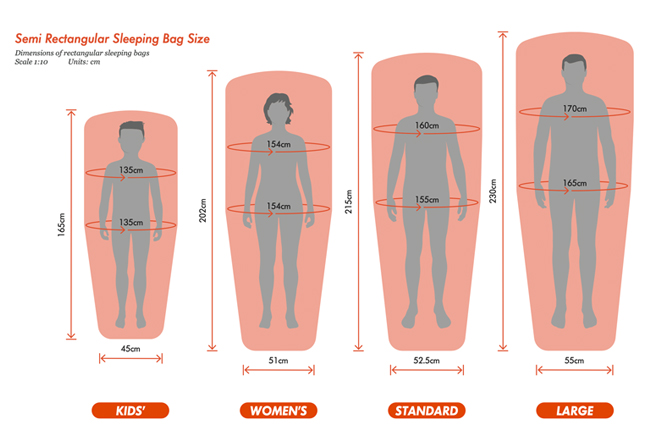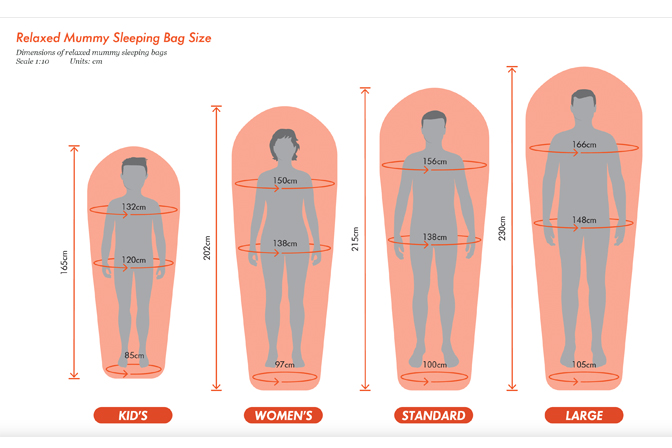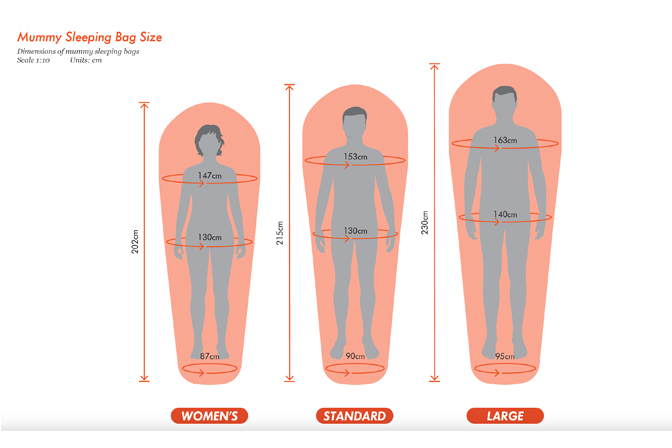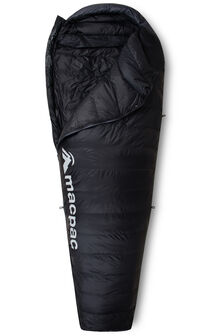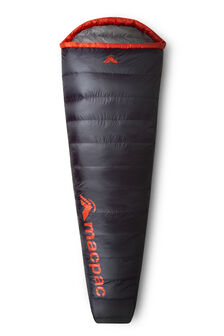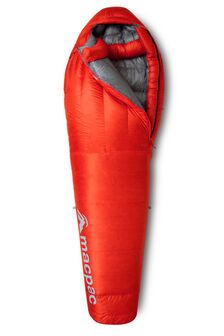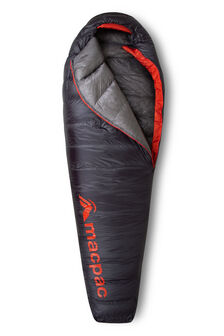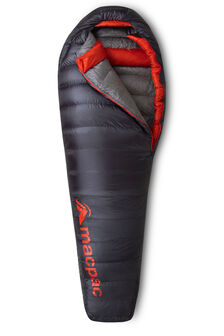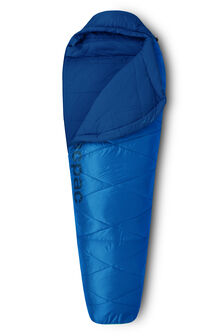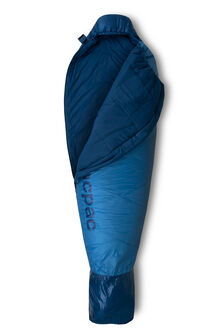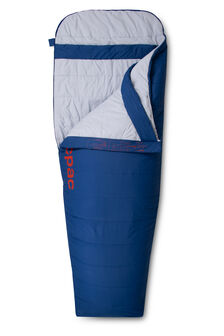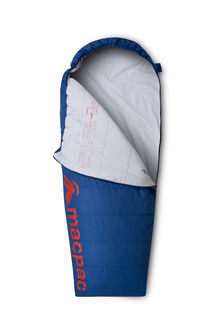
Why Do I Need A Sleeping Bag?
Getting a perfect night’s sleep outdoors is often rare, but the right sleeping bag makes a big difference. Whether you’re buying your first bag or upgrading an old one, there’s a lot to weigh up. This guide breaks down what to look for, so you can choose the best bag for your adventure.
How to Choose the Right Sleeping Bag
When choosing a sleeping bag, think about:
- Activity: What will you use it for? Summer camping trips vs. overnight alpine expeditions will have very different requirements.
- Temperature rating: What season are you heading out in? Look for a bag that suits the lowest temperatures you’ll realistically face.
- Insulation type: Down or synthetic? Each has pros and cons depending on your priorities like weight, warmth, and moisture resistance.
- Shape and sizing: Sleeping bags come in different shapes that perform differently. Make sure the fit is right for you.
- Packed size: Fill, shape, and overall size affect how compact your bag will be when packed. This matters if space is limited in your pack.
- Weight: If you’re carrying your gear (e.g. hiking or bike packing), weight makes a difference.
NZAT 350 Down Quilt
Designed for committed alpinists, the NZAT Down Quilt 350 is ultralight, water-resistant and can sleep up to three individuals.
- Shape: Quilt
- Fill: 90/10 ALLIED Feather + Down HyperDRY Goose Down
- Fill power: 850
- Weight: 760 g
Firefly 200 Down Sleeping Bag
A zipperless down sleeping bag, highly compressible for lightweight adventures.
- Shape: Mummy
- Fill: 90/10 ALLIED Feather + Down HyperDRY Goose Down
- Sizes: Standard, Large
- Temperature rating: Comfort 7°C / Limit 3°C / Extreme -11°C
- Weight: 467 g (standard), 506 g (large)
Dusk 400 Down Sleeping Bag
A practical down sleeping bag for warmer 3-season adventures.
- Shape: Relaxed Mummy
- Fill: 80/20 ALLIED Feather + Down HyperDRY Duck Down
- Sizes: Standard, Large, Women’s
- Temperature rating: Comfort 3°C / Limit -3°C / Extreme -19°C
- Weight: 917 g (standard), 898 g (women’s), 1004 g (large)
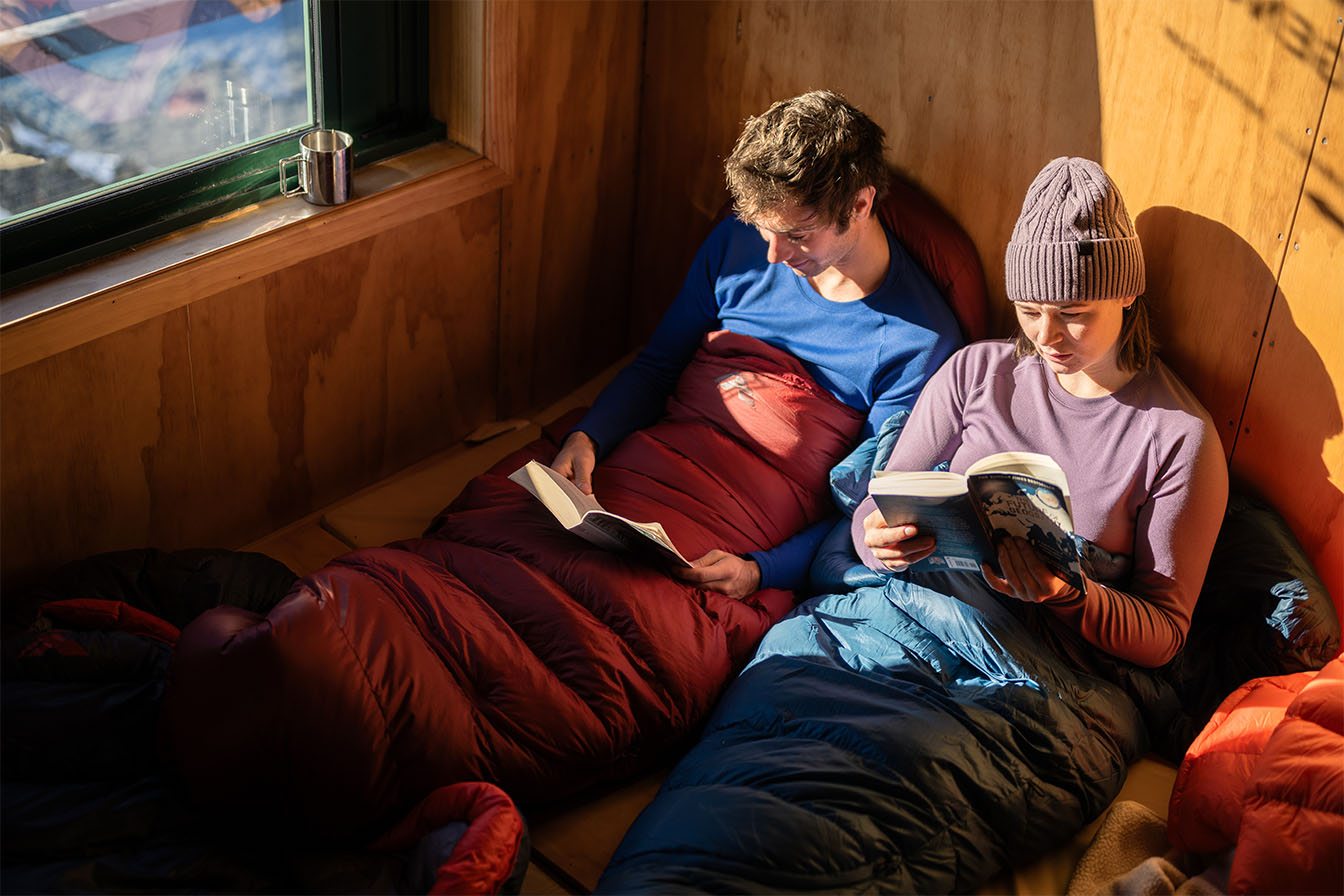
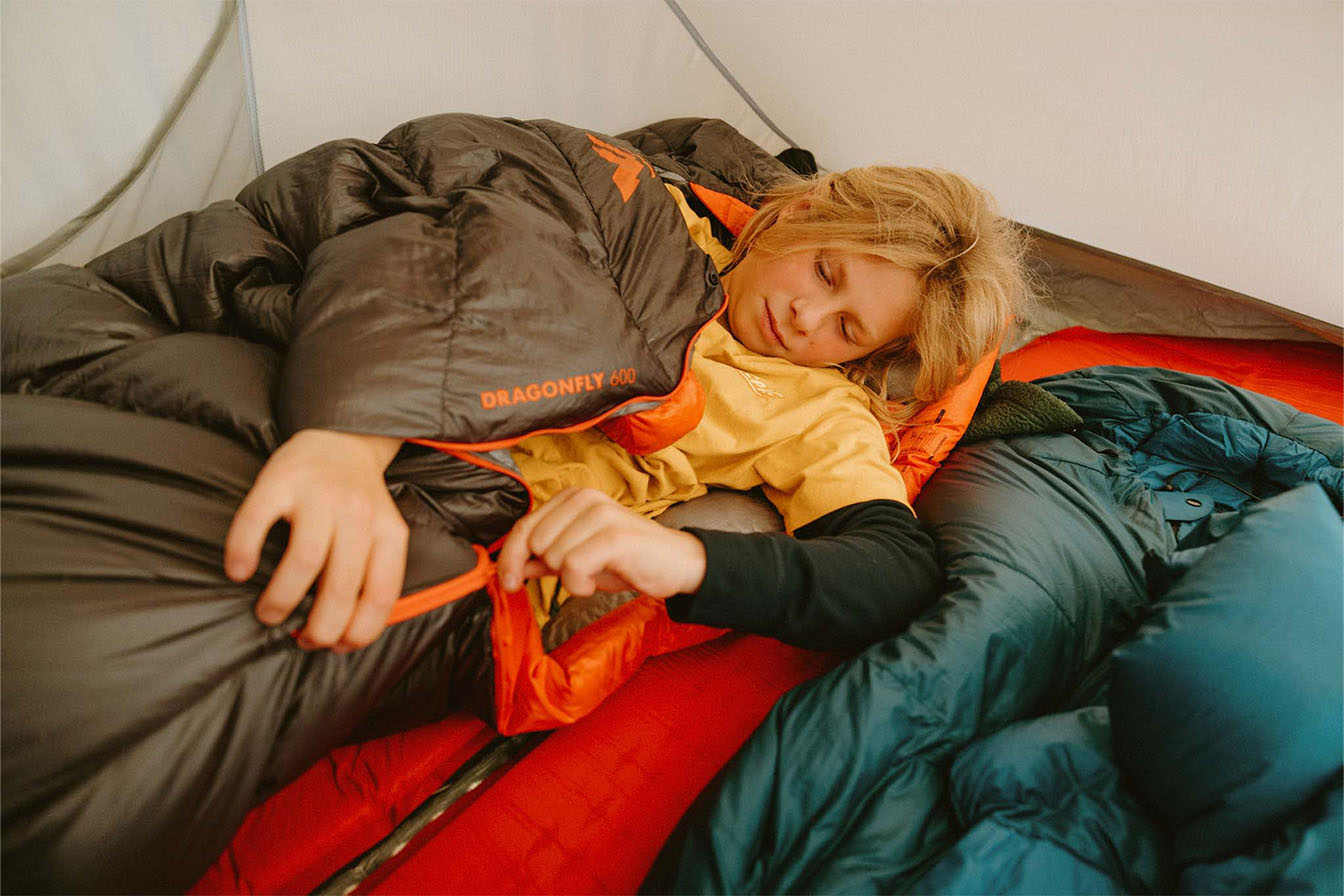
Dusk 750
A toasty warm duck down sleeping bag designed in a comfortable, relaxed mummy fit. Suitable for hiking and camping adventures.
- Shape: Relaxed Mummy
- Fill: 80/20 ALLIED Feather + Down HyperDRY Duck Down
- Sizes: Standard, Large, Women’s
- Temperature rating: Comfort -4°C / Limit -10°C / Extreme -30°C
- Weight: 1,288g (standard), 1211 g (women’s), 1383 g (large)
Dragonfly 400
A toasty down sleeping bag with all the essentials for quick and easy getaways.
- Shape: Mummy
- Fill: 90/10 ALLIED Feather + Down HyperDRY Goose Down
- Sizes: Standard, Large
- Temperature rating: Comfort 1°C / Limit -5°C / Extreme -22°C
- Weight: 731g (standard)
Dragonfly 600
A technical down sleeping bag with all the essentials and potential for use in colder temps.
- Shape: Mummy
- Fill: 90/10 ALLIED Feather + Down HyperDRY Goose Down
- Sizes: Standard, Large
- Temperature rating: Comfort -3°C / Limit -10°C / Extreme -29°C
- Weight: 981g (standard), 1064 g (large)
Serac
Our flagship alpine sleeping bag, designed for extreme cold and alpine conditions.
- Shape: Mummy
- Fill: 90/10 ALLIED Feather + Down HyperDRY Goose Down
- Sizes: Standard, Large
- Temperature rating: Comfort -10°C / Limit -17°C / Extreme -40°C
- Weight: 1,469 g (standard)
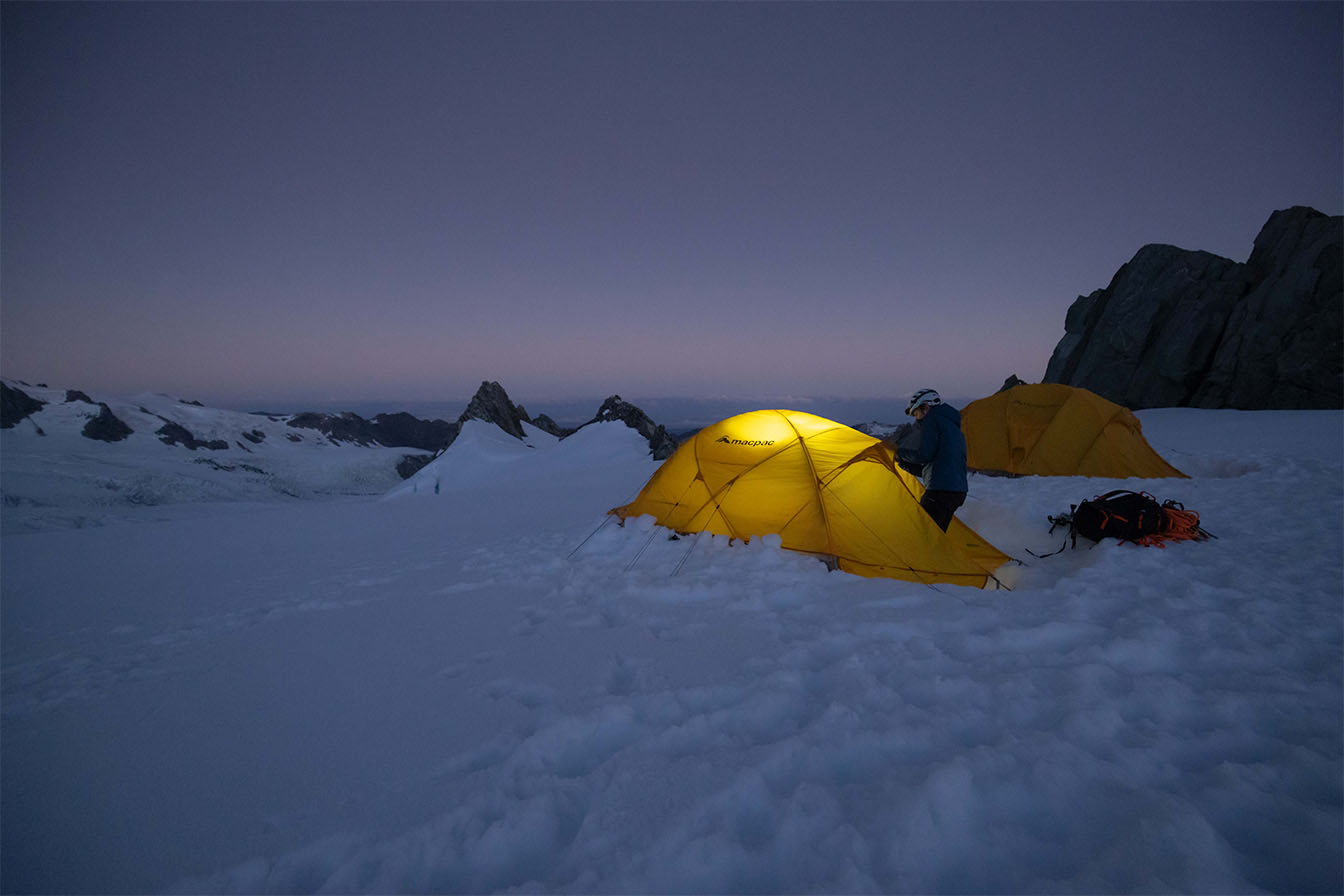
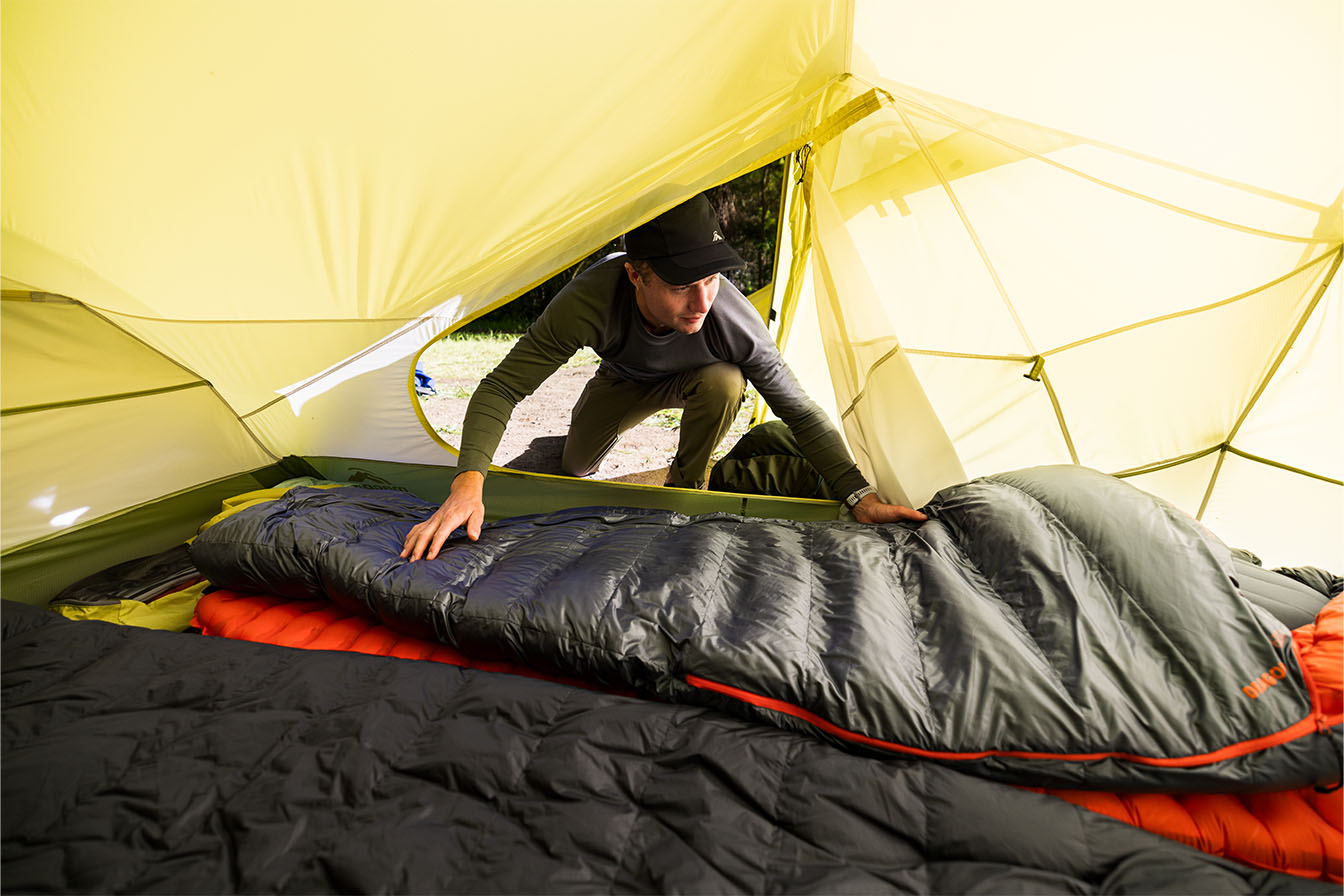
Escapade 500
A versatile sleeping bag to keep you warm while camping and travelling — made with lightweight, performance fabrics and duck down.
- Shape: Semi Rectangular
- Fill: 80/20 Duck Down
- Sizes: Standard, Large, Women’s
- Temperature rating: Comfort 2°C / Limit -3°C / Extreme -20°C
- Weight: 1111 g (standard)
Escapade 700
- Shape: Semi Rectangular
- Fill: 80/20 Duck Down
- Sizes: Standard, Large, Women’s
- Temperature rating: Comfort -1°C / Limit -7°C / Extreme -25°C
- Weight: 1322 g (standard)
Aspire 360
A technical synthetic sleeping bag designed for all kinds of camping. Now made using recycled fill.
- Shape: Relaxed Mummy
- Fill: Recycled Polyester
- Sizes: Standard, Large, Women’s, Kids’
- Temperature rating: Comfort -3°C / Limit -10°C / Extreme -29°C
- Weight: 1705 g (standard)
The Details
Sleeping Bag Shapes
- Semi-Rectangular: Roomier, with a square footbox — great for car camping and travel. Can be fully opened into a quilt.
- Relaxed Mummy: Tapered at the shoulders and hips but still roomy enough to move. A good all-rounder for most hikers.
- Mummy: A snug fit for the best warmth-to-weight ratio. Ideal for lightweight and alpine trips — used in Macpac’s performance bags.
Sleeping Bag Sizes
- Kids: Designed with moderate temperature ratings for young adventurers. The Aspire 270 has an adjustable length.
- Women’s Specific: Narrower at the shoulders and shorter in length, but with the same fill as standard bags. The down is redistributed for more warmth at the feet and core, suiting women’s physiologies.
- Standard: Your regular-sized sleeping bag.
- Large: Longer and wider — best for taller or broader frames.
Sleeping Bag Activity
- Car Camping: Bags for camping and road trips focus on comfort. Usually rectangular, they tend to be bulkier and heavier.
- Hiking: Hiking bags balance warmth and weight, and are made to pack down small for easy carrying.
- Alpine: For alpine trips, choose a bag with excellent insulation and minimal bulk — warmth is critical when temperatures drop overnight.
Macpac Standard Dusk 400 Down Sleeping Bag (-3°C)
Our Price
A$370.99MEMBERS PRICE
30% OFFCLEARANCE
30% OFFSALE
30% OFFMacpac Standard Firefly 200 Down Sleeping Bag (3°C)
Our Price
A$399.99MEMBERS PRICE
20% OFFCLEARANCE
20% OFFSALE
20% OFFMacpac Standard Aspire 360 Synthetic Sleeping Bag (-10°C)
Our Price
A$174.99MEMBERS PRICE
30% OFFCLEARANCE
30% OFFSALE
30% OFFMacpac Standard Serac 1000 Down Sleeping Bag (-17°C)
Our Price
A$879.99MEMBERS PRICE
20% OFFCLEARANCE
20% OFFSALE
20% OFFMacpac Standard Dragonfly 400 Down Sleeping Bag (-5°C)
Our Price
A$559.99MEMBERS PRICE
20% OFFCLEARANCE
20% OFFSALE
20% OFFMacpac Standard Dragonfly 600 Down Sleeping Bag (-10°C)
Our Price
A$679.99MEMBERS PRICE
20% OFFCLEARANCE
20% OFFSALE
20% OFFMacpac Large Aspire 360 Synthetic Sleeping Bag (-10°C)
Our Price
A$188.99MEMBERS PRICE
30% OFFCLEARANCE
30% OFFSALE
30% OFFMacpac Kids' Aspire 270 Synthetic Sleeping Bag (1.8°C)
Our Price
A$118.99MEMBERS PRICE
30% OFFCLEARANCE
30% OFFSALE
30% OFFMacpac Standard Roam 200 Synthetic Sleeping Bag (-1°C)
Our Price
A$139.99MEMBERS PRICE
30% OFFCLEARANCE
30% OFFSALE
30% OFFMacpac Kids' Roam 160 Synthetic Sleeping Bag (7.5°C)
Our Price
A$97.99MEMBERS PRICE
30% OFFCLEARANCE
30% OFFSALE
30% OFF